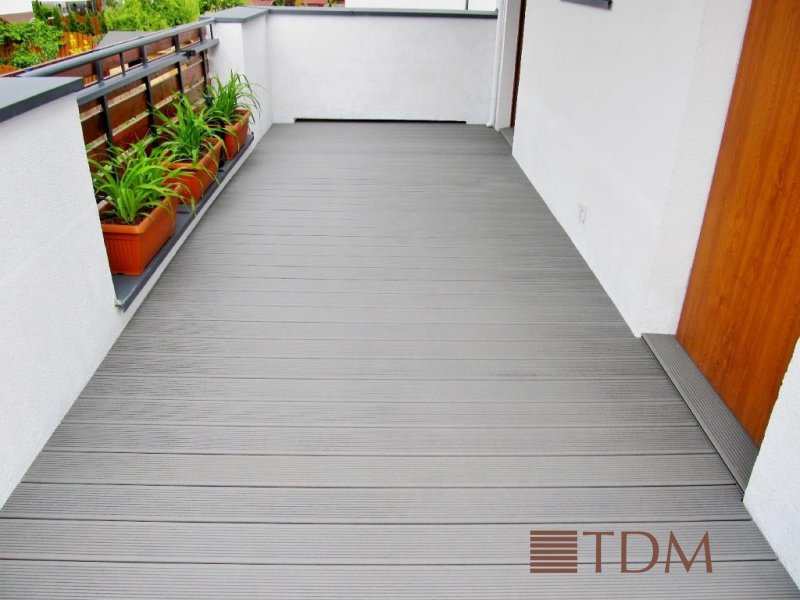 Kupno materiałów na taras bądź całego tarasu to istotna kwestia. W końcu będzie on stał przed domem przez kilkadziesiąt lat. Właśnie dlatego warto postawić na najwyższą jakość materiałów, a także zastanowić się, czy lepszy będzie kompozyt, czy też drewno. Każdy z materiałów ma swoje wady oraz zalety, a wybór powinien być uzależniony od własnych preferencji. Sprawdź, który będzie odpowiedni dla Ciebie!
Kupno materiałów na taras bądź całego tarasu to istotna kwestia. W końcu będzie on stał przed domem przez kilkadziesiąt lat. Właśnie dlatego warto postawić na najwyższą jakość materiałów, a także zastanowić się, czy lepszy będzie kompozyt, czy też drewno. Każdy z materiałów ma swoje wady oraz zalety, a wybór powinien być uzależniony od własnych preferencji. Sprawdź, który będzie odpowiedni dla Ciebie!
Drewno wciąż w modzie
Ogromną popularnością wciąż cieszą się tarasy w 100% drewniane, jednak utrzymanie ich w odpowiedniej kondycji przez lata to już nie lada wyzwanie. Coroczna konieczność impregnowania drewna jest czasochłonna, a także kosztowna. Mało tego, nawet impregnowane drewno ulega procesom niszczenia, starzenia lub próchnienia. Często konieczne są wymiany niektórych elementów tarasu. Krótko mówiąc, w pełni drewniane tarasy wymagają ciągłej pielęgnacji, uwagi oraz odpowiedniego traktowania. Jednak w zamian można otrzymać zapach drewna o poranku, cichutko skrzypiące klepki zwiastujące kroki, elegancję i bliskość natury. Nic nie jest w stanie oddać charakteru tarasu drewnianego. Spędzone na nim chwile zapadną w pamięci na długie lata. Właśnie dlatego tak wielu wciąż stawia na naturalne drewno. Oczywiście bardzo dużo zależy od gatunku drewna! Rzeczą jasną jest, że dębowe tarasy mogą wytrzymać nawet setki lat, a sosnowe będą wymagały ciągłych napraw i interwencji. Co ważne, nic nie jest w stanie zastąpić w 100% naturalnego drewna.
Nowoczesne tarasy
Niemałą nowością na rynku jest tzw. materiał WPC. Jest to połączenie drewna z kompozytem, które oferuje wszelkie zalety zarówno materiałów naturalnych, drewnianych, jak i sztucznych, kompozytowych. Ta podwójna natura pozwala na zmaksymalizowanie wytrzymałości tarasów budowanych z desek WPC – szkodniki oraz złe warunki atmosferyczne nie są straszne deskom wykonanym w tej technologii. Producenci tego typu materiałów doskonale wiedzą, że taras jest konstrukcją, która ma służyć przez wiele długich lat. Właśnie dlatego udostępnili WPC, dzięki któremu cel ten jest możliwy do osiągnięcia! Poza wspomnianymi wcześniej szkodliwymi warunkami atmosferycznymi oraz szkodnikami, WPC jest również odporne na przychodzące z wiekiem grzyby, pleśnie, próchnienie oraz liczne, inne zagrożenia. Jest to więc świetne rozwiązanie dla osób, które nie chcą tracić czasu na konserwowanie drewna, a przy tym chcą zachować urok drewnianego tarasu.
Sztuczne piękno
 Pozostają jeszcze materiały w pełni kompozytowe, które mimo wszystko często są mieszanką PCV z odrobiną drewnianych trocin. To właśnie dzięki nim, nowoczesne tarasy kompozytowe są tak bardzo podobne do tych drewnianych bądź wykonanych z WPC. Nawet zwolennicy w 100% naturalnych tarasów będą gotowi przekonać się do kompozytu, jeżeli pod uwagę wezmą również kwestie wytrzymałości. Materiał ten przetrwa wszelkie niedogodności atmosferyczny, ząb czasu nie pozostawi na nim uszczerbku, a grzyby i pleśnie nawet nie spróbują opanować tarasu. Oczywiście są również wady takiego rozwiązania. Mowa o potrzebie zachowania minimalnych odstępów pomiędzy deskami – wyłącznie wtedy możliwe jest zachowanie odpowiednich efektów wizualnych, które nie pozwolą odróżnić kompozytu od naturalnego drewna. Warto również zauważyć, że deski kompozytowe mają wiele innych zastosowań – wykorzystuje się je do budowy pomostów, deptaków, balkonów i wielu innych konstrukcji. Świadczy to przede wszystkim o ich popularności i wysokiej odporności na różne czynniki. Stawiając taras kompozytowy, zapewnisz sobie kompletny brak zmartwień o impregnację, odpowiednią pielęgnację i problemy z grzybami. Taras będzie świetnie się prezentował przez długie lata.
Pozostają jeszcze materiały w pełni kompozytowe, które mimo wszystko często są mieszanką PCV z odrobiną drewnianych trocin. To właśnie dzięki nim, nowoczesne tarasy kompozytowe są tak bardzo podobne do tych drewnianych bądź wykonanych z WPC. Nawet zwolennicy w 100% naturalnych tarasów będą gotowi przekonać się do kompozytu, jeżeli pod uwagę wezmą również kwestie wytrzymałości. Materiał ten przetrwa wszelkie niedogodności atmosferyczny, ząb czasu nie pozostawi na nim uszczerbku, a grzyby i pleśnie nawet nie spróbują opanować tarasu. Oczywiście są również wady takiego rozwiązania. Mowa o potrzebie zachowania minimalnych odstępów pomiędzy deskami – wyłącznie wtedy możliwe jest zachowanie odpowiednich efektów wizualnych, które nie pozwolą odróżnić kompozytu od naturalnego drewna. Warto również zauważyć, że deski kompozytowe mają wiele innych zastosowań – wykorzystuje się je do budowy pomostów, deptaków, balkonów i wielu innych konstrukcji. Świadczy to przede wszystkim o ich popularności i wysokiej odporności na różne czynniki. Stawiając taras kompozytowy, zapewnisz sobie kompletny brak zmartwień o impregnację, odpowiednią pielęgnację i problemy z grzybami. Taras będzie świetnie się prezentował przez długie lata.
Mając trzy możliwości i wiedząc, że każda z nich niesie ze sobą wady oraz zalety, warto zastanowić się samemu, które z rozwiązań będzie odpowiednie. Każdy ma inne preferencje i pragnienia. Kompozyt oraz WPC świetnie sprawdzą się u osób, które nie chcą zawracać sobie głowy czasochłonną pielęgnacją i są gotowe zrezygnować z naturalnego charakteru, a drewno powinny wybrać osoby, które cenią sobie naturę oraz ponadczasowy design, a także takie, które lubią prace impregnacyjne. Jedno jest pewne – nie ważne, z czego powstanie Twój taras, każdy z nich spełni swoją rolę i umożliwi spędzenie miłych chwil na świeżym powietrzu.

